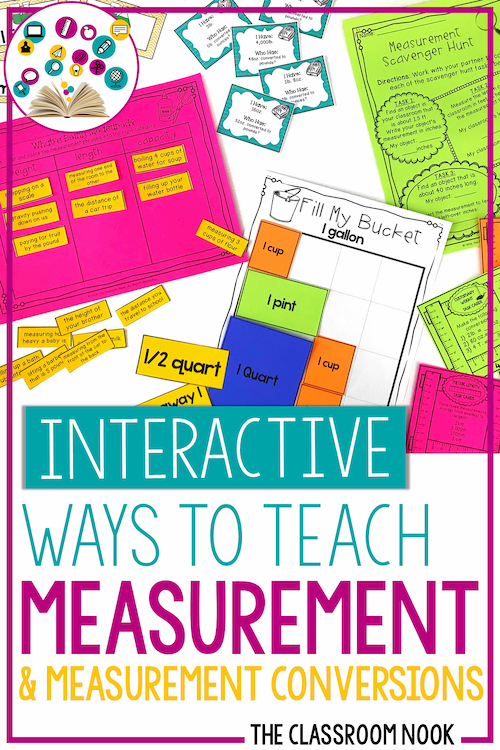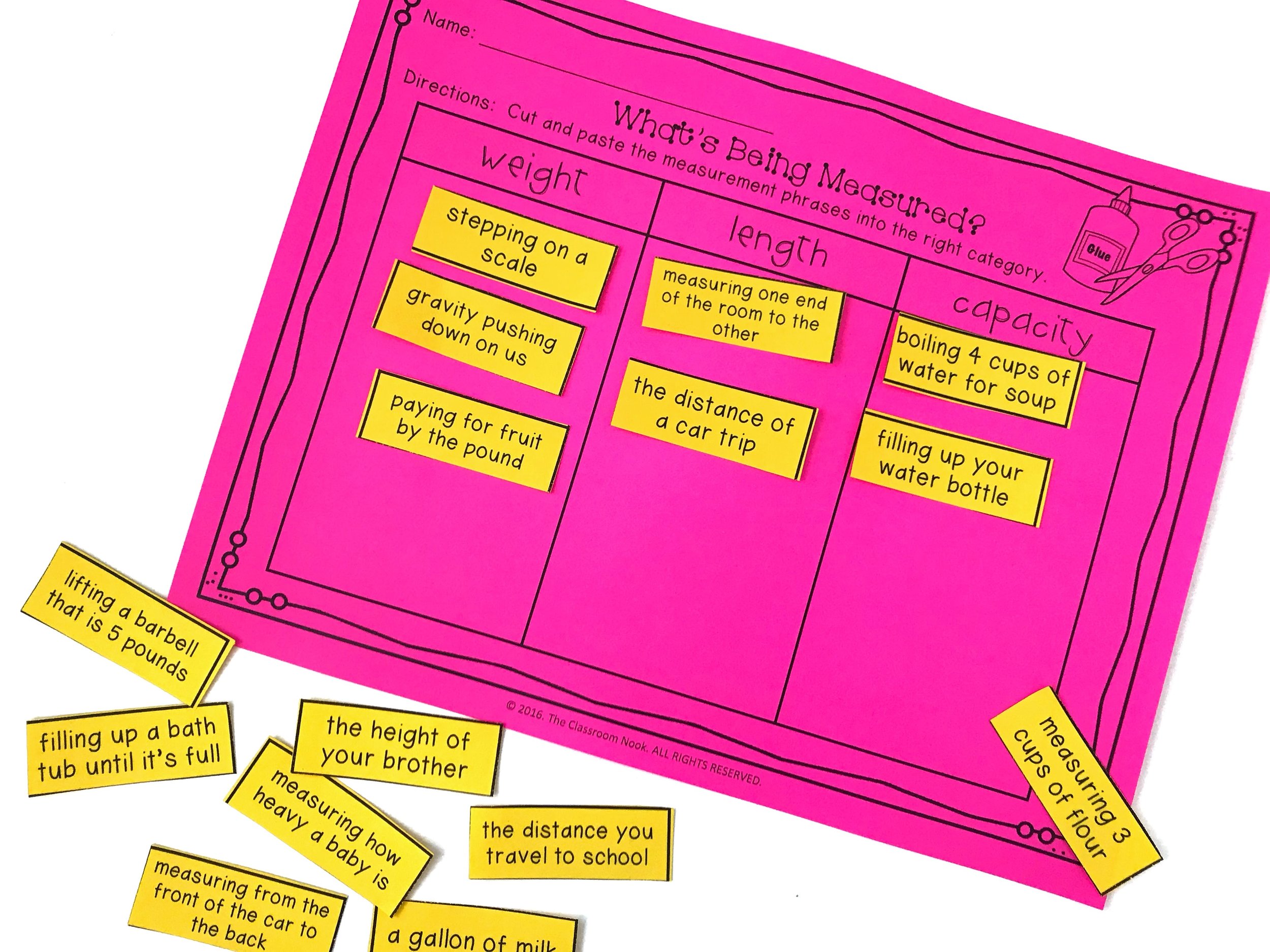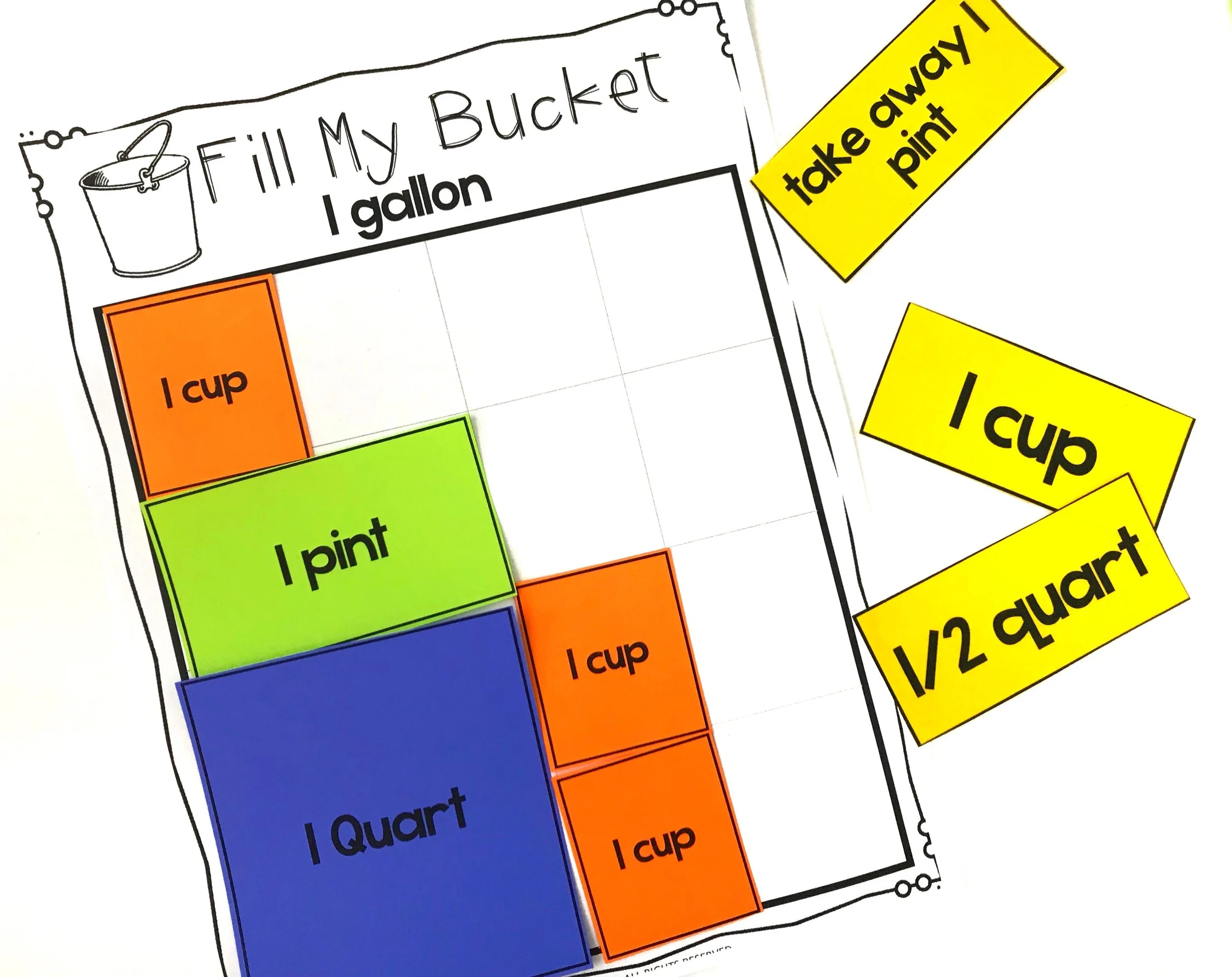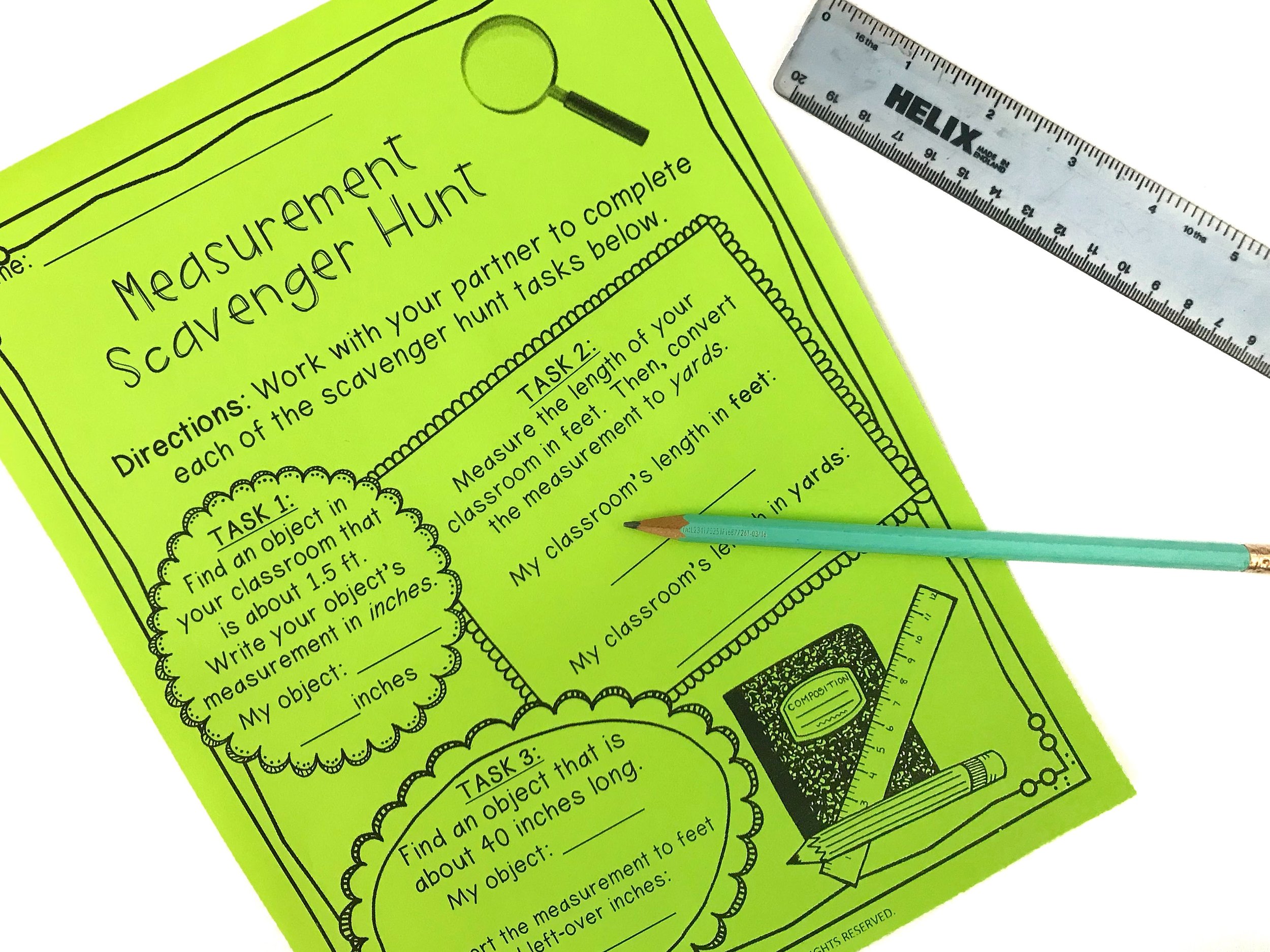Interactive Ways to Teach Measurement and Measurement Conversions

I've heard it from teacher after teacher: "I dread teaching measurement every year."
It's hard to blame them. There's nothing ground-shaking about measurement. There's nothing exciting about metric vs. customary.
It's just one of those skills that our students need to have in their back pocket - and so - we teach it.
Measurement conversions, especially, can be hard for students because it calls upon so many other math skills such as math operations, number sense. Students can often get lost in the “number weeds” as they try to go from customary to metric and back again. On top of that, there are several units of measure. cups, ounces, millimeters, liters, centimeters, and so on. It’s not wonder that students eyes begin to glaze over when you try to teach them basic concepts of measuring.
BUT- If there's anything a teacher is good at, it's spicing up even the most boring content. So, let's try, shall we.
Here are 5 interactive ways to teach measurement:
Use Study Jams from Scholastic
Have you used Study Jams before? It's a free video library from Scholastic with short animated clips teaching math and science concepts - and there is a whole section devoted to measurement! When I taught measurement, I used their "units of measurement" video to introduce the difference between the customary and metric systems.
You'll also find videos covering topics like perimeter, elapsed time, measuring temperature, and more! Simply head to the math section of Study Jams and search for measurement under "See All Topics". Add one of these videos to your teaching for instant engagement!
DO A MEASUREMENT SORT:
The three main types of measuring that I covered with my students during our measurement conversions unit were
length, weight, and capacity. Discerning between the three can be tricky for students. One way I helped students to identify what they were measuring was to have them do a sort. Students read about several real-world measurement scenarios and decide what is being measured: length, weight, or capacity. They create a sort like this:
Try this simple measurement sort with your students for FREE.
free Measurement sort
Try this simple, low-prep activity for introducing measurement to your students.
Students learn to distinguish between measuring weight, length, and capacity as they cut and paste different examples into categories!
TASK CARDS:
Task cards can be a teacher's favorite tool for giving students extra practice with a skill. They are so versatile. Put them at a center and have students work on them individually or use them for a whole-class game of SCOOT. Just having math problems on a task card instead of a worksheet gives students that feeling of a game - and it is much more interactive. I like to use a series of task cards for each measuring skill that students learn throughout my measurement unit.
If you like the idea of task cards, but love the idea of digital task cards even more, check these out!
PLAY GAMES:
Give me a topic - I turn it into a game. It's what I do! :) And when you take a topic as dry as measurement, playing games is a MUST! Take classic games like "I have… Who has," "SCOOT", or "memory match" and turn them into games for measurement.
Another game I created for my measurement unit was called "Fill the Bucket." This game is played when students are learning about measuring capacity using customary units (cup, pint, quart, and gallon). The goal of the game is to be the first student to fill up their bucket. Students pick a "capacity card" from a pile indicating how much they can put in their bucket. For example, if a student picks up a "1 pint" capacity card, then he/she places a "1 pint" bucket card inside their bucket.
With this visual game, students can easily see that 2 cups = a pint, or 2 pints = 1 quart, and so on. Students can even make trades (like 2 cups for 1 pint) in order to fit their bucket cards inside their bucket. There are also some trick playing cards that indicate for students to take-away from their bucket. Students have to fill up their bucket exactly without "spilling over." Students love it! Find this game in my measurement unit.
MEASUREMENT SCAVENGER HUNT
Scavenger hunts are one my most favorite interactive ways to have students practice a skill - and it works PERFECTLY for measuring. Your classroom is FULL of things to measure, so this activity takes no prep at all! Give your students a scavenger hunt sheet and a ruler and have students explore your classroom looking for objects in the classroom that fit the descriptions on their sheet. For example, on my scavenger hunt sheet, I had students looking for 2 objects that were both 2 feet long - BUT, I had them represent the actual length of the object that they found in inches.
Sneaky teacher!
Students would record their measurements on their sheet.
There you have it - 5 interactive ways to taking teaching measurement from drab to fab!
You can find all of these activities along with teacher lesson plans, student activity sheets, anchor slides and much more in my complete unit on measurement conversions - all the work is done for you! Check it out here:









